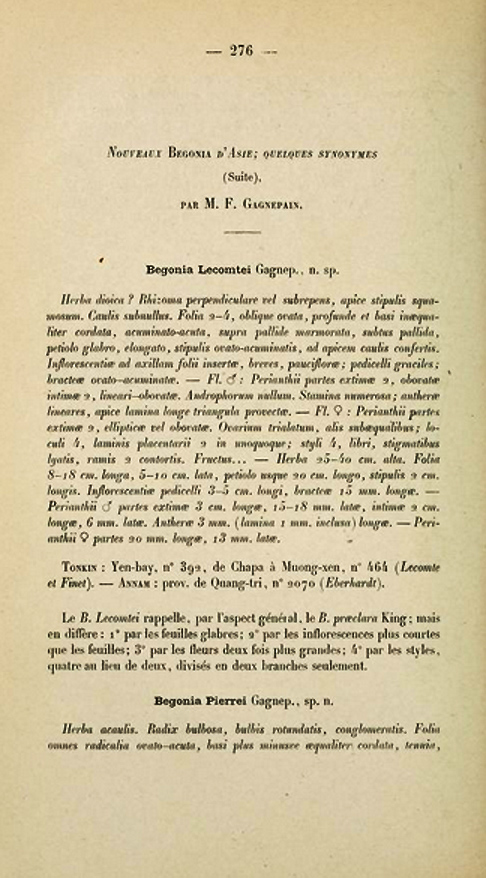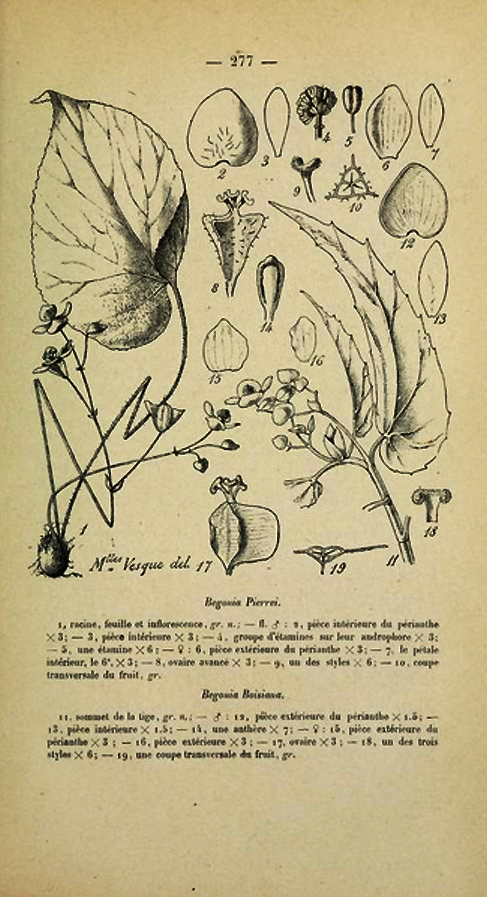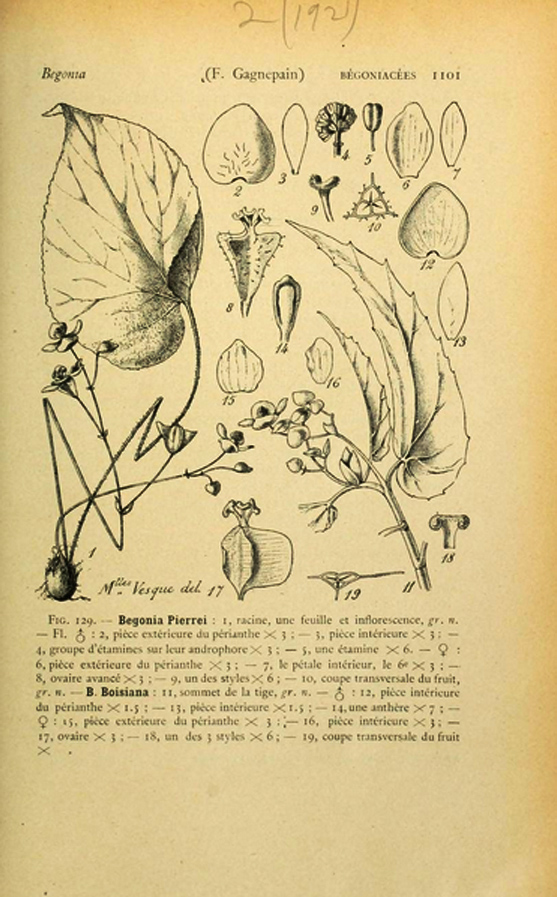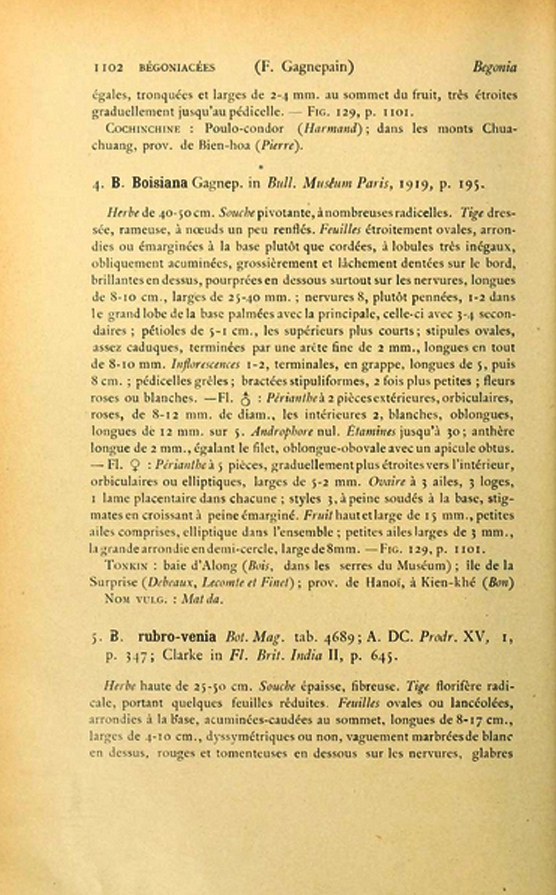
Plante découverte en septembre 1865 par J. B. Louis Pierre (1833-1905) sur les pentes du mont China Chiang, dans la province de Bien Hoa. Toutefois, les botanistes considèrent comme le type de cette espèce, un exemplaire récolté par J. H. A. J. Harmand à Poulo-Condor à une date inconnue.

Elle a été décrite en 1919 par François Gagnepain (1866-1952) dans le Bulletin du Muséum d’Histoire Naturelle numéro 25, page 276,. Il a aussi été décrit dans la Flore générale d’Indo-Chine, tome 2, pages 1100 et 1102, avec une gravure page 1101.
L’épithète spécifique rend hommage à l’inventeur de la plante.
L’espèce fait partie de la section Reichenheimia.



Plante a souche bulbeuse, de 15 à 20 centimètres de haut. Feuilles radicales, ovales, aigües, cordées, couvertes sur des deux faces de poils mou, marbrées sur le dessus. Inflorescences ne dépassant pas les feuilles, également six couvertes de poils, fleurs mâles à deux tépales, fleurs femelles à 6 tépales.
Le B. pierrei est proche du B. harmandii dont il se distingue par son aspect plus velu et la forme des fruits.
Je n’ai jamais croisé cette plante en culture.
Plant discovered in September 1865 by J. B. Louis Pierre (1833-1905) on the slopes of Mount China Chiang, in the province of Bien Hoa. However, botanists consider as the type of this species, a copy harvested by J. H. A. J. Harmand to Poulo-Condor at an unknown date.
It was described in 1919 by François Gagnepain (1866-1952) in the Bulletin du Muséum d’Histoire Naturelle number 25, page 276,. It has also been described in the Flore générale d’Indo-Chine, Volume 2, pages 1100 and 1102, with an engraving page 1101.
The specific epithet pays tribute to the inventor of the plant.
This species is part of the Reichenheimia section.
Plant with a bulbous strain, 15 to 20 centimeters high. Leaves radical, oval, acute, cordate, covered on both sides with soft hairs, mottled on top. Inflorescences not exceeding the leaves, also six covered with hairs, male flowers with two tepals, female flowers with 6 tepals.
B. pierrei is close to B. harmandii and is distinguished by its more hairy appearance and fruit shape.
I have never seen this plant in cultivation.


